Hatchling Preserved in Amber (Photos)
Tiny talon
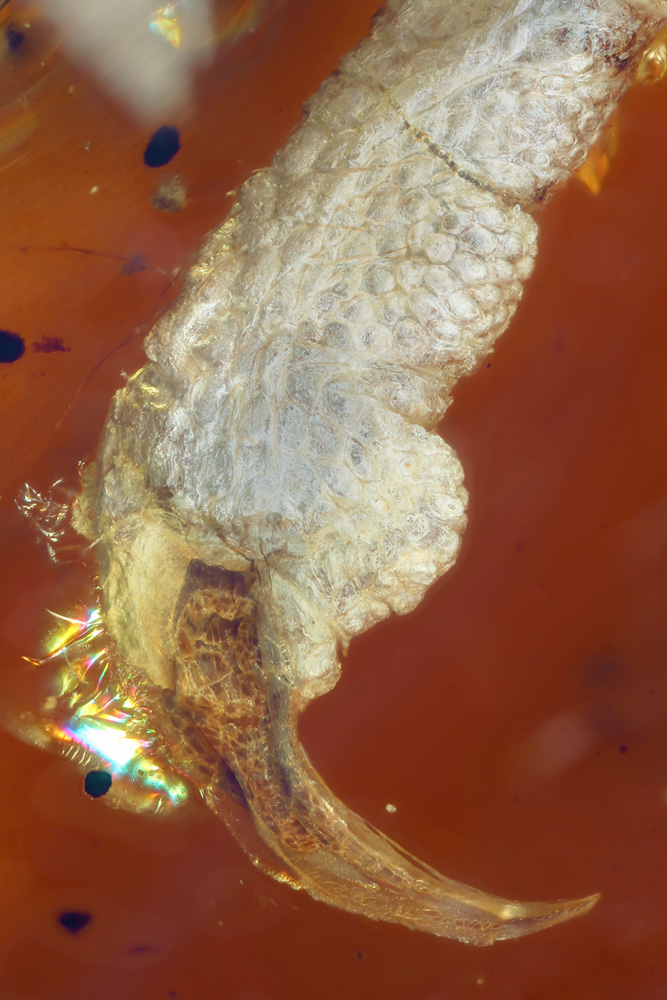
The most complete fossil to date of a Cretaceous avian hatchling preserved in amber was announced recently. The discovery was made by an amber miner in Myanmar in 2014. The hind toe, claw and skin texture are well-preserved and clearly visible.
Peek into the past
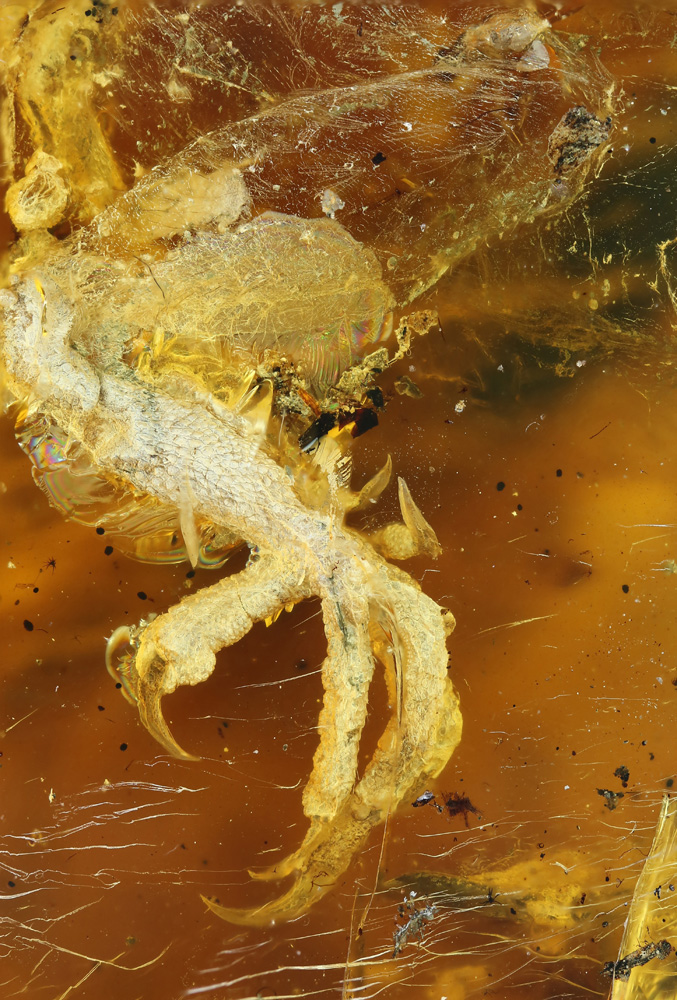
The specimen includes skeletal material from the head, neck, feet and wing of the hatchling, providing amazing detail into the anatomy of an ancient group of toothed birds called the Enantiornithes. Along with the foot and shin, some translucent skin above the ankle area was preserved as well.
Making connections
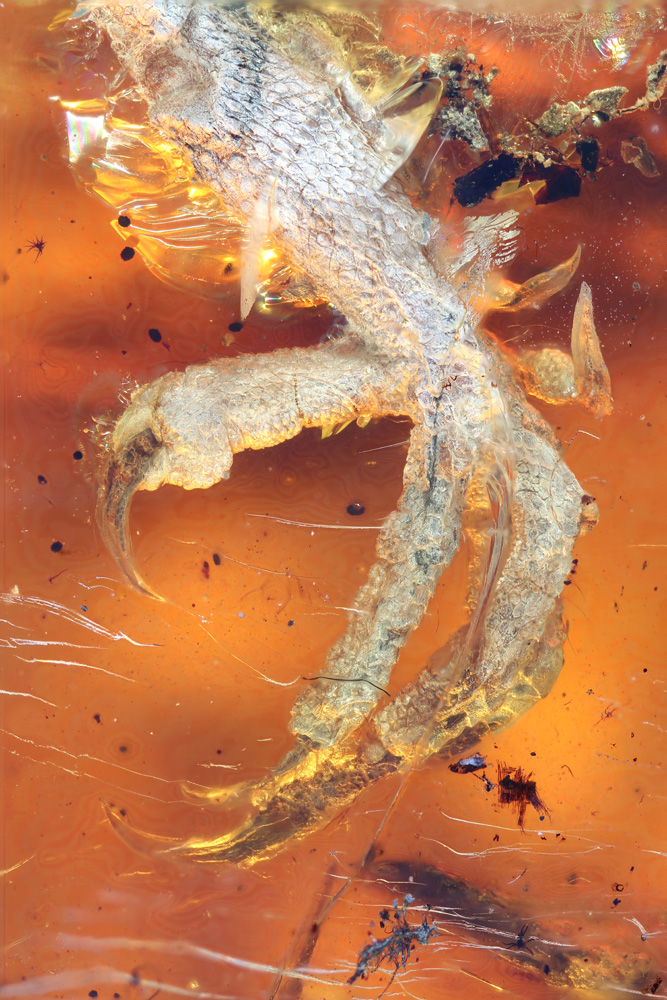
The fossil, housed at Hupoge Amber Museum in China, measures around 9 centimeters long, with the hatchling measuring about 6 centimeters from beak to tail. A considerable amount of soft tissue is preserved along with the head, cervical vertebrae, wings and feet. The preservation of the specimen is so good, the texture of the skin on the feet is clearly visible.
Preserved for posterity
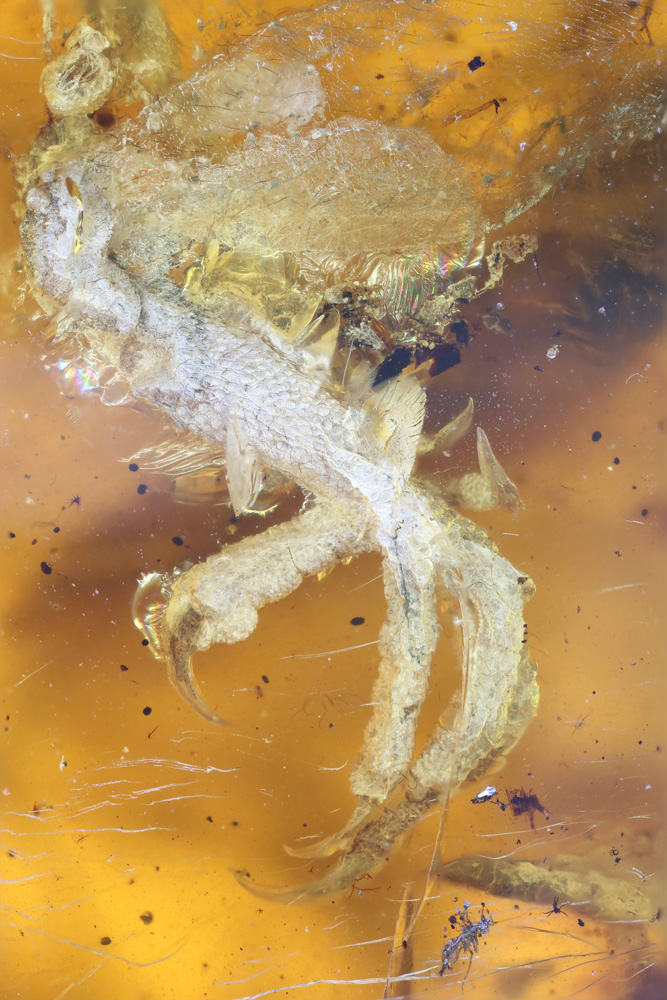
The find provides the best representation of a hatchling from the Cretaceous Period, with the scaly skin of the bird's foot and claws very well preserved.
Answering questions
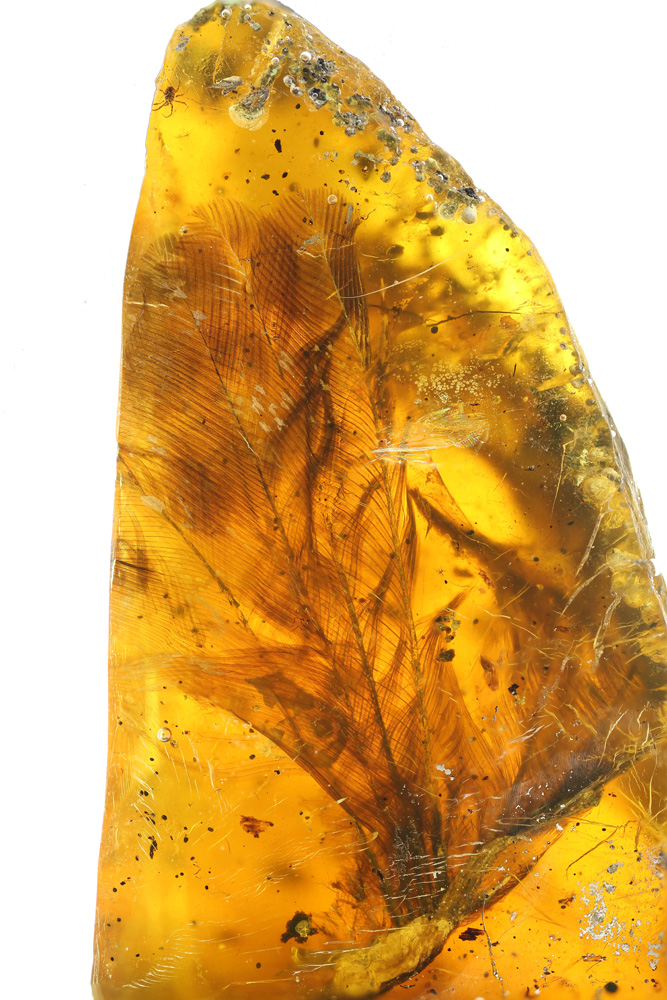
This specimen gives researchers insight as to the development of this group of ancient birds. The wing tip in this amber displays the finger bones and how the feathers attached to the wing bones.
Technology focuses the past

The fossil is encased in 99-million-year-old Burmese (Myanmar) amber. CT scans reveal details in the head, neck, feet and wing tip.
Early loss
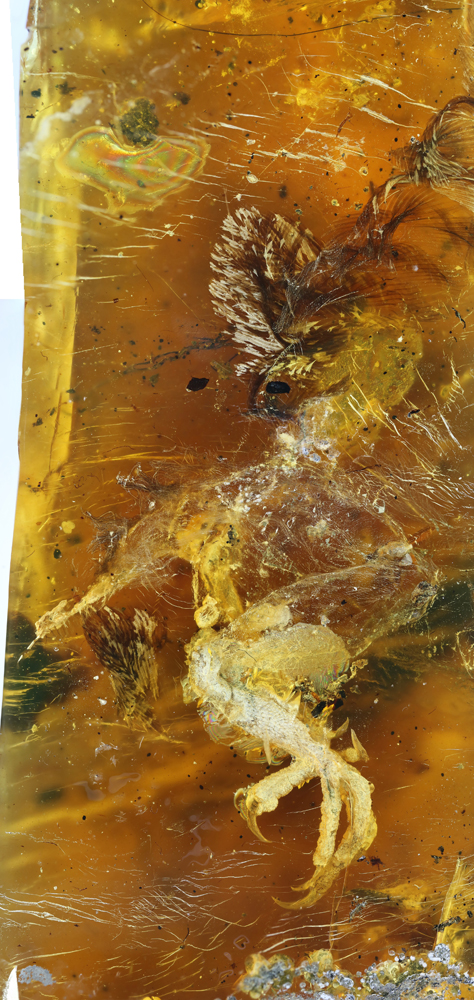
The young bird was going through its first feather molt, meaning that it was encased in the amber within days after it hatched. The legs, wing, tail and partial skull are entombed in the amber.
Get the world’s most fascinating discoveries delivered straight to your inbox.
It takes a team

Jingmai O'Connor of the Institute of Vertebrate Paleontology and Paleoanthropology, Chinese Academy of Sciences, aided in the research and description of the fossil.
Important imagery

Dr. Lida Xing of the China University of Geosciences, Beijing, and Dr. Ryan C. McKellar, Curator of Invertebrate Palaeontology at the Royal Saskatchewan Museum (RSM), worked at the RSM using microphotography to get the very detailed images of the specimen.
Drawing conclusions

Combining the expertise of many people involved in the research, this graphic helps visualize the connection between the actual amber-entombed specimen, the X-ray micro-CT data and the artist's conception of the hatchling.
Belone

Researchers named the specimen "Belone," which is a local term for an amber-colored bird. An artist's concept examines how the feather distribution and preserved skin may have looked.


